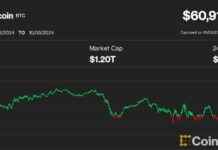The financial world is kind of like a high school cafeteria, split between the cool kids who wait for permission and the rebels who make their own destiny. In the last crypto cycle, it was all about memecoins, crazy yields, and rollercoaster-like volatility. But where is crypto headed now? Well, it’s all about stability, liquidity, and actually being useful in the real world. As the world faces economic uncertainty and more robots taking our jobs, on-chain dollars are going to be the new backbone of how we buy stuff, work together, and move money around.
So, when things get a little shaky in the global economy, everyone still wants the good old U.S. dollar, the world’s favorite reserve asset. But here’s the thing – people want dollars without having to deal with banks. That’s where stablecoins like USD Coin (USDC) and Tether (USDT) come in. They’ve become the go-to for saving and spending in places where the traditional money system is falling apart. We’re in a new era where the dollar isn’t just printed by the Fed; it’s minted on-chain, powered by this fancy borderless and frictionless tech.
Stablecoins like USDC, USDT, PayPal USD (PYUSD), and the newcomer Ethena USDe (USDE) are doing big things every day, not because they’re some get-rich-quick scheme, but because they actually work as real money. In Nigeria, for example, stablecoins are taking over where the local currency is failing. Web3 startups in Nigeria have raised a ton of money because stablecoins are becoming more popular. And it’s not just Nigeria – in Argentina, where inflation is through the roof at 200%, people are ditching pesos for USDT and USDC like there’s no tomorrow. When regular money gets all wonky, stablecoins are the new heroes.
The dollar is slowly but surely moving onto the blockchain, and if you’re not on board, you might get left in the dust. Big players like PayPal are now supporting PYUSD, which is a big deal and shows that stablecoins are here to stay. The U.S. Congress is even working on rules for stablecoins to keep things legit. And over in the UK and EU, they’re doing the same. Base, Solana, and Celo are all getting in on the action, spreading USDC across different chains because they know that stablecoins are the bridge between old-school finance and the wild world of DeFi. If you’re not paying attention to all this, you’re basically ignoring where the money game is headed.
It’s not just us humans who are getting in on the stablecoin action. AI agents are going to need money that doesn’t go crazy in value every day. These bots don’t care about hype or drama; they want efficiency, low risk, and something they can count on when it comes to cash. Traditional money has its limits – it’s slow, clunky, and tied to borders. Stablecoins fix all that because they live on the blockchain, which is like a super secure and global internet for money.
Think about USDC, for example. Once Circle makes some USDC on the blockchain, it’s there to stay. It’s not controlled by any one country or bank; it’s free to roam the digital world. This is why stablecoins are going to be the big deal in the future when tons of different systems need to talk to each other fast. AI-driven finance is going to depend on stablecoins to keep everything running smoothly, whether it’s a supply-chain bot or a trading algorithm.
Businesses need to start thinking about using stablecoins for payments because everyone else is catching on. As more people get into blockchain and Bitcoin, stablecoins are going to be the norm. People are starting to see them as a better option than regular money, and it’s happening faster than you might think.
The dollar is making its way onto the blockchain because that’s just where we’re headed. The old way of doing things with money is starting to crack, and stablecoins are the fix we need. Eventually, they’ll be the new and improved version of how we handle cash. So, get ready for the dollar to go digital – it’s happening whether you like it or not.














